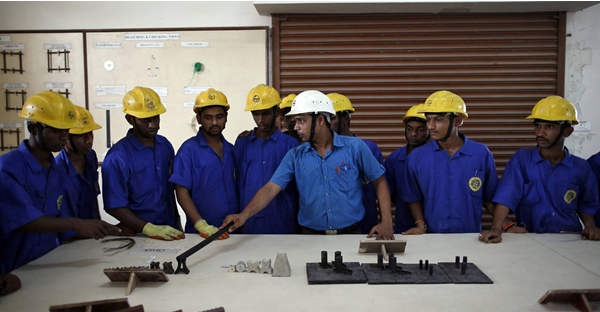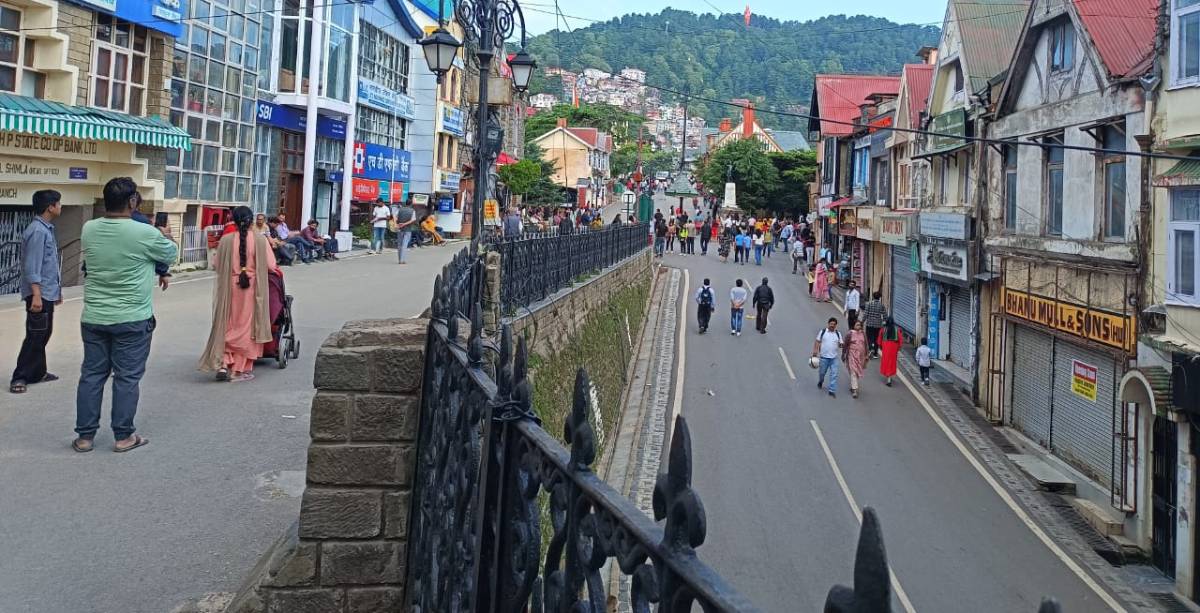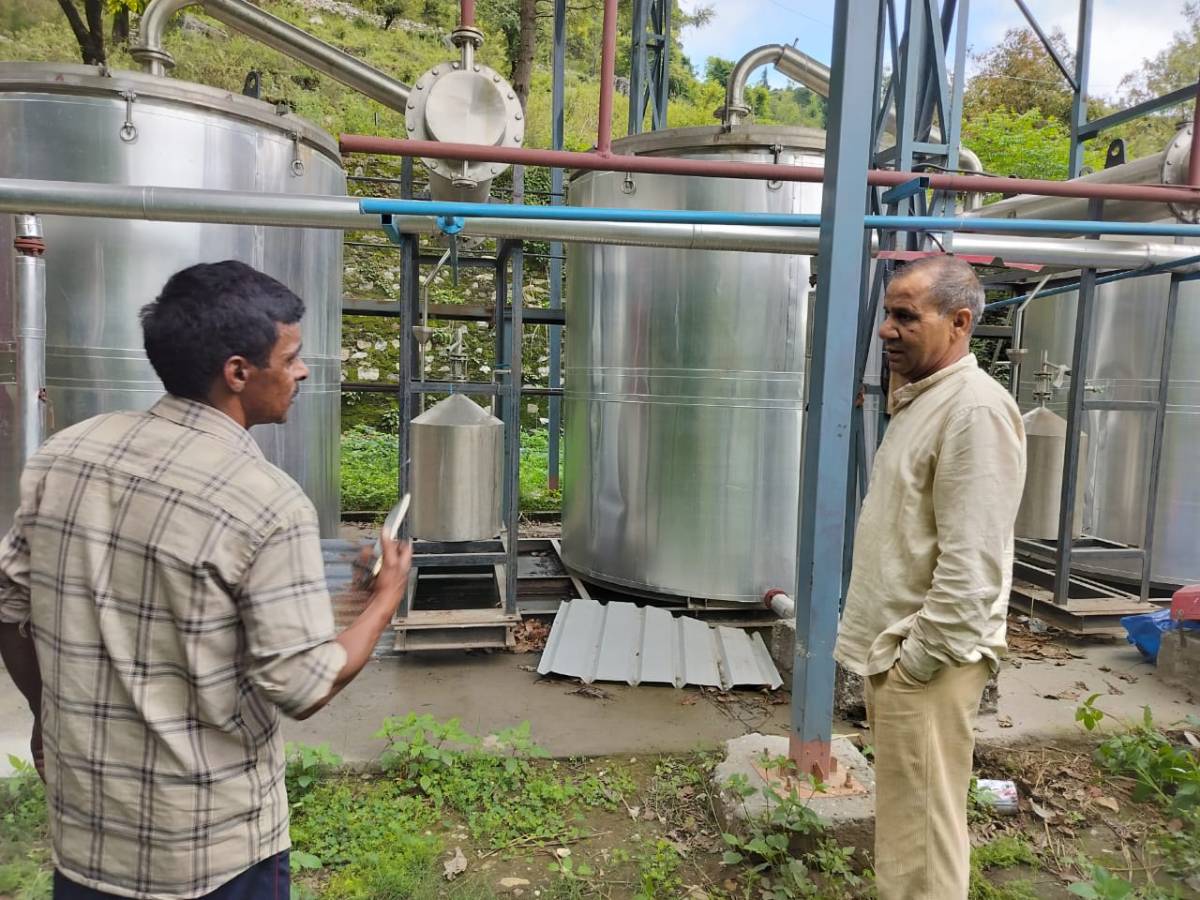Context
Urban unemployment is a challenge in India. While urban growth contributes to creation of opportunities for the highly skilled particularly in sectors such as IT, Banking & Finance, Hotel, Hospitality, Education sector, Health sector etc., the growth opportunities does not necessarily completely absorb the marginal segments of urban society, the urban poor. Youth face challenges in accessing urban employment opportunities which are constrained by factors associated with information, skills, training, sourcing, networking etc. apart for economic growth expanding job opportunities.
The different employment challenges indicated by research on urban employment include casualization of labour, failure to generate rapid growth of regular employment in the modern organised sectors, lack of uptake of entrepreneurship, limited decent employment opportunities particularly in informal sector, dominance of informal employment, low remuneration and income, subsistence living, lack of social security, risk, lack of employment security, temporary and part time work, lack of employment benefits etc.
Macro data indicates that labour force participation rates (LFPR) in India stands at 36.9% and work participation rates (WPR) at 34.1%. It tended to be low particularly due to exceptionally low female LFPR and WPR at 16.1% and 14.7%. Unemployment rates stands at 7.7% with male unemployment at 7.1% and female unemployed at 9.9%. A high disparity is displayed in male and female employment. (NSSO, 2021) Applying education criteria to WPR and LFPR, it is found that with additional levels of education, unemployment only increases further. Hence educated unemployment is an emerging issue.
As in September 2021, unemployment rate in India stood at 8.62%. The pattern is similar for Chhattisgarh. LFPR as on September 2020 stood at 37.1% and WPR at 30.1%. Distribution of persons in urban Chhattisgarh across different sectors indicated 9.34% as engaged in agricultural sector, 25.99% in secondary sector and 64.67% in tertiary sector. Urban unemployment rate was seen at 15.4% as of September 2020. (NSSO, 2021)
A study was undertaken in Urban Chhattisgarh to identify the challenges of youth in relation to employment, their constraints in accessing employment, institutions engaged in promoting urban employment, potential policy recommendations for expanding urban employment. Four cities were focused a) Raipur, b) Bhilai, c) Durg and d) Bilaspur.
Profile of the four cities
Nature of each of these cities varies. Raipur is a commercial and industrial destination and has coal, power, steel and aluminium industries and iron market. Large and medium size companies in power, construction & chemicals are present in the district. Bhilai is known for its steel plant. It has also in turn generated other micro and small ancillary industries. The area has become a metallurgical hub. It has various cement factories. It is also a hub for power generation. Bilaspur is a power hub. It is also a railway zone with presence of SECL. It has State electricity Board, NTPC etc. It is also famous for handicrafts such as woodcarving, terracotta, bamboo items, dry flower etc.
Based on the Census 2011, working population in Raipur is 36.6%. 0.9% are cultivators, 1.9% agricultural labourers, 3.4% household industry workers and 93.8% other workers. The working population in Bhilai is about 32.7%. 0.5% are cultivators, 0.8% agricultural labourers, 2.2% household industry workers and 96.5% other workers. In Durg, the working population is 36.2%. 1.3% are cultivators, 2.5% agricultural labourers, 2.9% household industry workers and 93.3% other workers. The working population in Bilaspur is about 34.4%. 1.2% are cultivators, 1.8% agricultural labourers, 2.4% household industry workers and 94.6% other workers.
In terms of employment patterns in urban Chhattisgarh, 29% are self-employed, 36.4% regular / wage employed, 25.1% casual labourers and 9.5% others. As per NSSO 2011-12 data, 14.7% were dependent on primary sector, 34.8% on secondary sector and 50.5% tertiary sector. In terms of unemployed population, about 85,052 are unemployed across the four cities. Raipur has unemployment of about 36,875, Bhilai about 22,385, Durg 13,262 and Bilaspur 12,081 based on application of unemployment percentages of CMIE to the population of these cities.
The field study covered 300 youth – 34% from Durg-Bhilai, 41% Raipur and 25% Bilaspur. The findings include the following: –
Status of Youth
Demographics
18-35 age category was studied. Category wise, 9.7% belonged to Scheduled Castes, 10.7% to Scheduled Tribes, 71.0% to other backward castes and 8.6% to other castes. About 51.0% were below poverty line (BPL), 3.0% ultra-poor and 18.7% low-income households. 61.0% belonged to nuclear families. The family size of households was 5.1 with 2.8 males and 2.3 females. Each household has about 1.9 working members with male working members at 1.5 and female working members at 0.4. WPR was 37.5% with male WPR at 54.8% and female WPR at 16.6%.
Educational profile of the youth
About 33.0% of youth are Graduates or Postgraduates, 18.7% were educated upto high school, 18.7% upto middle school and remaining 9.4% either educated upto primary school or merely literate or illiterate. 5.7% were into professional education. 3.0% received vocational education and 11.7% attained non-formal vocational education.
About 20% of youth were pursuing education in school or college. Instances of dropouts was seen due to financial reasons as pointed by 35.4% youth and 19.6% indicating need to take up family responsibilities at an early age due to economic necessities. Education was primarily being pursued in government institutions. Among those pursuing education, 43.3% were undergoing graduation in government Degree College, 16.7% were pursuing education in government school. 10% were into professional colleges.
Work profile of the youth
About three-eighths of the youth 36.7% were unemployed. 26.3% were in look out for work. 28.7% were working for salary or wage. 14.3% were working as self-employed or as own account worker. 13.0% were attending education or training.
Kind of work engagement
33.2% were self-employed in non-agricultural activities, 23.3% were wage workers and 6.6% were salaried workers either full time or part time. About 46.7% of the workers are unskilled workers, 36.7% were semi-skilled workers, 16.0% were skilled workers and 0.7% were highly skilled workers. Many workers are unskilled.
Youth and Enterprises
Among those who owned enterprises, 82.9% had not received any support. 4.9% received credit support, training, and machinery / toolkits. On need for additional skills, 46.3% mentioned need for business skills, 41.5% for marketing skills, 36.6% on business skills and 24.4% on improved financial literacy. 9.8% mentioned need for improved management skills, 9.8% on technical skills and 4.9% on DPR preparation skills.
Youth and Employment
Most youth were new entrants to workforce. About 36.4% were in workforce for lesser than 2 years, 13% between 2 to 4 years, 12.3% between 5 to 8 years and 3.3% for more than 8 years.
Sector-wise distribution of employment
About 36.7% were either unemployed or looking out for work. 4.4% were engaged in primary sector. 14.8% were engaged in secondary sector with 6.3% engaged in construction sector, 2% in household production and 6.3% in manufacturing sector. 44.3% were engaged in service sector, of which 9.7% were engaged in trading, 0.3% in education, 4% in health services, 6.3% in food & beverages, 3% in hotel & hospitality, 2.3% in transportation, and 9.3% in repairing services and 9.3% others.
Means of acquiring vocational qualification
Among 17.7% who mentioned the process of acquiring vocational skills, within those 35.8% preferred to on-the-job training, 28.3% formal training, and 13.2% apprenticeship and 22.6% others.
Type of Unemployment
Unemployment was a result of several factors which included due to lack of job creation in the economy (open unemployment), lack of jobs appropriate to education (educated unemployment) and under-employed (disguised unemployment). Based on their self-perception on the type of unemployment, 44.4% were experiencing open unemployment. 39.4% were facing educated unemployment, 15.0% experienced disguised unemployment, 14.4% each experienced seasonal unemployment and cyclical unemployment each, 8.8% faced technological unemployment, 7.5% each faced underemployment and frictional unemployment.
Youth action to deal with joblessness

The youth had their own ways to deal with joblessness. This was through ways they explored opportunities, sourced information, sectors explored etc.
Qualities in finding a Job
In relation to skills needed in finding a job, a mix of job specific skills, language skills and soft skills was pointed out. 24.7% mentioned technical and job specific skills, 15 % information technology skills, 28% command of languages. 29.7% the need for knowledge of business world. 33.3% the need for communication skills. 21% mentioned ambition, 20.3% good general education and 12.3% good appearance. 8% pointed the necessity of vocational education.
About 40.0% pointed out that they were willing to undertake work and study simultaneously. In terms of stream of education which is preferred among those willing to take up further education, 43.9% preferred Arts education, 14.4%-pointed commerce education, 11.1% referred to science education. 69.4% referred to general education overall. 30.6% referred to professional education. Preference for vocational education was not mentioned as an important choice.
Post study plans
About 69.7% stated they were exploring employment. In relation to plans after study, both employment and self-employment options were stated. A mix of options was mentioned. While 62%-pointed preference for employment in government or private sector, about 45.7% were also opened to take up enterprise either a new one or a family enterprise. 6% pointed other types of job too.
In relation to period since which they are in lookout for work, about 2.9% mentioned they have been in search of job for less than a month. 13.9% were in lookout for jobs for a period of 1 to 2 months. 17.7% for 3 to 6 months. 28.2% are exploring job possibilities for 6 months to 1 year. 37.4% have been looking for work for more than a year.
Sources of Information for finding employment
In relation to sources of information for finding employment, there is a mix of sources which is used. Both informal and formal forms of information exchange is adopted. The information sources include information through friends (72.7%), neighbours (21.7%), and relatives (18.3%) and peers (10.3%). The formal sources include newspaper (29.7%), placement centres (9.0%), and employment exchange (4.3%) and educational institute (1.0%).
Among methods adopted to find employment, 38.0% mentioned that they are seeking assistance of friends, relatives, colleagues. 23.0% mentioned that they are seeking advertisements in newspaper, internet job portals. 13.7% mentioned that they are attending job fairs. 11.0% have registered at employment exchanges and looking for jobs. 19.7% have mentioned that they are directly applying to employers and appearing for competitive exams. 6.7% mentioned that they are checking at worksites, farms, factory gates, markets, or other assembly places. As indicated earlier, social contacts / networks are an important source of information.
Sorts of jobs being looked for
40.3% are looking for semi-skilled jobs. 16.3% are in lookout for professional job, 14.8% are trying to find clerical job, 18.2% exploring administrative job and 4.3% finding managerial jobs. Among the things that are looked for in a job, about 40.7% mentioned that they look out for stability. 52.6% mentioned that they look for good pay. 23.4% want a stable, well-paid job appropriate to education. Hence this indicates a desire for stability and security in employment.
Youth aspiration for self-employment
About 53.7% of the youth stated that they are in look out for self-employment. In relation to the type of business, 23% wanted to take up trading-based enterprises, 33.5% services-based enterprises and 36% other types of enterprises which are largely either home based such as tailoring, fancy store, beauty parlour or those related to repairing enterprises such as electrical work, welding. About 12% showed a preference for production-based enterprises.
Government or Private
About 30% of the youth preferred employment in government or public sector. 29.1% preferred employment in private sector. 39.4% preferred business – individual, family or in partnership with others. Hence overall preference for employment either in government or private sector continues to be preferred by close to 60% or three-fifths of the youth. 40% prefer to undertake self-employment. A preference for employment is seen more in comparison to self-employment.
Job fit with educational qualifications
About 67.7% mentioned that their educational qualifications do not fit with the type of jobs being pursued by them. This was 17.7% for those engaged in semi-skilled work, 14.3% by those in administrative work, 12.8% those engaged in unskilled work and 30.5% of those engaged in service sector.
Relevant sector
In terms of the relevant sector, 14% stated that relevant sector for them is repairing services such as trades such as automobile repairing, electronics, electrical, welding, mechanic etc. 11% preferred engagement in wholesale or retail trade. 9% stated that public administration and defence was a relevant service for them. 6.3% mentioned that information technology and computer related work was relevant for them. 8% felt and hotel and restaurant business as more relevant for them. 11.3% stated a preference for education, health, and social work, legal, community and social services. 3.6% felt that tourism, hotel, and hospitality services are more relevant for them. A larger preference is seen for service sector-based jobs and trades followed by manufacturing sector related repairing services.
Skills necessary for getting employment
A mix of skills was pointed as necessary for getting employment. A considerable proportion i.e.., 55.7% mentioned that language skills are prominent. 34% pointed social skills are important for fetching a job. 34% of those primarily interested in setting enterprises stated the need for business skills. 27.3% mentioned the need for having technological skills. 23.7% stated the necessity for acquiring technical or job specific skills. 21.3% felt that documentation skills are needed and 9.3% stated inter-personal skills are also required. Hence youth felt that skill sets need to go beyond the technical and job skills for acquisition of employment.
Training for Employment and Self-Employment
About 46.3% mentioned that they are willing to relocate for getting a job. In relation to places for relocation, 67.6% preferred to work within the town, district headquarters or capital city. 20.9% were willing to take up jobs in other states too. About 8.6% stated that they are also willing to go abroad.
Preferred course for enrolment

In relation to preferred course for employment, 23.9% stated that they would like to pursue multi-media related courses, 16.5% engineering based trades such as electrical, electronic, telecommunication etc., 12.5% software-based courses. Other trades mentioned also included 14.2% who stated advertising & public relation, 4% IT enabled and BPO services, 0.6% banking & finance. Trades largely associated with use of computers such as computers – were the preferred option for majority of the youth.
In relation to affordability of fee for skill training for employment or self-employment, about 31.3% stated that they could afford a fee which is less than Rs. 5,000. In relation to certification, 86.9% stated that it could be certificate course. 75.6% mentioned it could be Diploma course. About 26% were willing to pay fees for skill program. In relation to affiliation of courses, 78% felt that they need to be affiliated to government bodies of universities. About 29% felt that such programs could be useful.
In relation to skill related trainings, about 30% stated that they have heard about such trainings. About 78% stated that they are willing to undergo trainings. 87.2% wanted such trainings to be conducted within the city. 19.7% stated that it could also be within the state. 2.1% mentioned it could also be outside the state. About 33.7% stated that they had heard about self-employment trainings. 78.3% stated that they were willing to undergo self-employment related trainings. About 77.4% wanted trainings within the city. 18.3% wanted the trainings to be organized within the state. 6.8% stated it could also be outside the state.
Perspectives of Stakeholders on Employment promotion
To address the issue of urban employment different government agencies were involved in promoting urban employment.
State Urban Development Agency (SUDA)
SUDA focuses on three areas youth, street vendors and SHGs. 18-35 age group is trained in skills. Selection of sectors, vocations and job roles are identified through consultative process. Some trainings such as plastic engineering have high placement rates. The different sectors identified with potential employment include Construction (Bar vending), Information technology enabled services (ITES), Business Process outsourcing (BPO), Health (Hospital), Hotels and Banking.
The vocations usually preferred by females includes Beauty Parlour, Tailoring, Food based outlets, Retail sector etc. There is low placement taking in manufacturing sector. Salaries are in the range of Rs. 7,000-15,000. There is increase in demand for positions such as Nursing Assistant. Other sectors identified by SUDA survey are Agarbatti, Healthcare, and computers. For male, additional sectors identified are construction, automobile, repairing services and others. Other potential sectors also include Retail, IT – Tally & GST. There is also demand for handicrafts in Bilaspur.
SUDA also offers street vendors program under which Rs. 10,000 is given to street vendors to upgrade their enterprise. Under self-employment program, Rs. 1 lakh to Rs. 10 lakh is given to individual entrepreneurs. SHGs have been provide with support in setting petty shops, vegetable vending, food processing, Gotal (cow sheds), mushroom cultivation, spices processing etc. Some of the enterprises promoted include pickle, papad, food processing, petty shops.
Directorate of Employment & Training
The department identifies vacancies, conducts rozgar melas and facilitates in placement of candidates into employment. From employment exchanges, they have transformed into career development centres. The department is focused on vocational guidance, training, and placement camps. The typical job positions in job melas are that of marketing and sales in Insurance and Banking services, which is commission based and does not represent full time job. Manufacturing sector hardly recruits. Highly skilled in manufacturing sector are from outside. Only unskilled workers are taken locally.
Those who register expect government job, which is white colour job or prefer to get employed in big industries. Engineering graduates struggle to match the expectations of the industry. About 18 lakhs are registered in employment exchange. District office in Raipur is running trainings on soft skills, personality development, spoken and behavioural skills. It conducted a program called ‘Agaaz’ counselling on options available after school education.
Chhattisgarh State Skill Development Authority (CSSDA)
CSSDA aims to enhance skill development ecosystem in the state. In recent past, CSSDA has changed its strategy from supply driven placement linked trainings to demand driven placement linked trainings. Placement percentages have increased to 80% from earlier 55%. The department is currently running two types of programs namely Pradhan Mantri Kaushal Vikas Yojana (PMKVY) and Chief Minister’s Kaushal Vikas Yojana (CMKVY).
The economic opportunities that are arising across all the four cities namely Raipur, Durg-Bhilai and Bilaspur are primarily in the service sector. Some of these service sub-sectors include Retail sector (Sales & Marketing positions), Health care (Bed care assistant), Data entry operator, GST, Automobile etc. Construction sector too offers employment potential of that as masons.
Women prefer employment as Bed care assistant, Nursing assistant, Beauty care services, Cooks etc. New opportunities in power such as maintenance services in distribution line, meter reading etc are arising. Service sector also provide opportunities to take up self-employment in case they do not find wage employment. An important initiative of CSSDA is Livelihood College, which is a centre of excellence in skill training. Need for innovation in skill trainings are required through multi-skilling with focus on aspects such as work ethics, time management and work behaviour.
The opportunities which are coming up are in the areas of Insurance, Banking, Education, e-Commerce, Retail, Health, Pharma, Hospitality, Media sectors. In construction sector, there are positions such as plumbers, electricians, masons etc. For females, the potential employment is in tailoring, beauty parlour, hotels, health sector and BPO. New opportunities have come up in COVID time particularly in health sector. New opportunities such as for positions as home assistants have arisen.
There is a need to improve the quality of faculty in Skill centres as getting faculty is a challenge. There is also need for cooperation of Chhattisgarh State Renewable Energy Development Agency (CREDA), Federation of Indian Chambers of Commerce and Industry (FICCI), and Confederation of Indian Industry (CII) for ensuring industry responds to industrial employment opportunities.
Chambers of Commerce and Industry
The Industrial body does not play a direct role in employment promotion as such but works as an industrial body for protection of industrial interests. Industry offers two types of jobs one of technical and the other of non-technical nature. For technical jobs, Industry prefers those with polytechnic and ITI background. For other jobs, they prefer jobs with graduation – B. A, B.SC and B.Com. For such positions, the share is 50 50.
A challenge stated by industry is that youth do not stay longer. According to them, in power sector there is need for elevated level of skills which is not catered through local human resources. In hotels & hospitality, the demand for positions is limited. Telecom, IT and Banking sector needs to be focused on through a positive industrial environment.
Micro-Small and Medium Enterprises (MSME)
MSME facilitates industrial investment and projects. It creates an industrial environment, sanctions projects, and provides subsidy support to industries. Industrial growth centres have been established across all the four cities. There is industrial stagnation. Even setting up of industrial projects is not contributing significant improvement in industrial employment.
Vocational Training Players (VTPs)
There are diverse types of vocational training players. These include Industrial Training Institutes (ITIs), Industrial Training Centres (ITCs) which offer longer term training for developing industrial skills. There are also VTPs which offer short duration programs for promoting skills towards employment and self-employment. Most of these VTPs are registered with CSSDA, NSDC, SUDA etc. Industry pointed of the need for ITI s to upgrade the courses to make the trainees more job ready. Technology and facilities provided at ITI s needed improvement.
Livelihood College has good infrastructure for running the skill programs. The trainees are absorbed outside such as in cities like Pune, Hyderabad, and Lucknow with a salary of Rs. 8,000 to Rs. 10,000. A range of courses such as that of domestic data entry operator, assistant electrician, field technician, computing, retail sales associate, mushroom grower is offered.
There are also VTPs registered with CSSDA, both Government and Private VTPs. Jan Shikshan Sansthan (JSS) offers vocational guidance, training with subsequent placement, especially women. It gets support from central government for courses like Tailoring, Beauty & wellness, embroidery, Jute Products, Data Entry operator and food processing mainly traditional snacks. The skills training is focused on women entrepreneurship. R-SETIs offer entrepreneurship trainings to youth.
Department of Labour
The department of labour is primarily concerned with ensuring compliance with labour laws by industry. It works towards ensuring that the labour welfare schemes are implemented, and it reaches the community. Private consultancy firms offer services to District employment office for placement of trainees. Consultancy is provided for recruitment to skilled / semi-skilled positions in industries like construction sector.
The current programs in place for employment generation in the state include Rajeev Gandhi Swavalamban Yojana, Mukyamantri Swavalamban Yojana, Mukyamantri Palika Bazaar Yojana, Pauni Pasari Yojana, Rag Pickers Kalyan Yojana, and Deendayal National Urban Livelihood Mission. Under each of these wage employment or self-employments are being promoted.
Macro and Micro scenario
The macro scenario is that of stagnation in industrial employment at macro-level and service sector emerging as the primary employment absorber.
In employment, there remains a gender disparity with WPR and LFPR against women. A high level of educated unemployment exists, which is open unemployment. Looking out for employment despite education is common. High level of dropouts exists despite educational aspirations. Government institutions are the major educator of youth. The situation of unemployed looking for work is common. Unemployment was seen as a mix of jobless growth and driven by education driven aspirations.
In work, there are lower number of regular salaried workers. The proportion of unskilled workers are more among those working. Penetration of enterprises which are voluntarily taken up is low. Among those aspiring for jobs, soft skills followed by language and job skill was seen, as necessary.
In relation to employment own business followed by private sector employment were the two top priorities for getting employment. Government employment no longer appears to be the top priority when it comes to employment.
In finding employment, social networks such as friends, neighbours, relatives are seen as important source for finding information on employment. Good pay was pointed as the top priority while looking for a Job. Youth tend to believe that their educational qualifications do not fit with the type of jobs being pursued by them.
The top preferred sectors for employment were repairing services (automobile, electrical, mechanic, mobile etc.) followed by employment in trade / retail sector and hotels & restaurants. Close to half are willing to relocate for employment.
Recommendations
There is a need for undertaking the following: –
Employment as a right
In line with Directive principles of state policy, there is a need to declare employment as a right. Under this a program titled Mahatma Gandhi Urban Employment Guarantee Act (MGUNEGA) need to be created for urban areas. Scheme along similar lines have been adopted in states such as Kerala, Himachal Pradesh, Odisha, and Jharkhand. It can guarantee livelihood security of urban poor. Under the program, ULBs can identify projects, prepare annual works plans and implement them through ward sabhas.
Under scheme titled Decentralised Urban Employment and Training (DUET), public places like educational institutions, hospitals and bus and railway stations could be kept clean by taking the services of jobless peoples in cities and towns. [1]
Employment around Urban services
Such an urban employment guarantee scheme can provide employment within city limits to all those who ask for it. Under such a program maintenance of public infrastructure, maintenance of urban commons, creating public infrastructure such as construction of roads, road widening activities, constructing, and renovating public infrastructure etc. could be taken up.
Investing in social services such as education, health, transportation, and other public services, as well as hospitality, have significant potential for job creation as well as the capacity to deliver equitable and green growth. (Centre for Sustainable Employment, Azim Premzi University , 2019)
Service collectives could be established where urban poor youth could offer services such as plumbing, electrician, and carpentry, repair of gas, repair of electronics, painting and driving, cooking services & provision of food, care of children, care of aged, health services etc. Such services could be delivered through service collectives of youth for a fee.
Service sectors such as retail and wholesale trade, storage and warehousing, transport and communication, Business & personal services, real estate, sales, and management, call centres, data centres, and personal grooming entertainment and recreation, social services like health and education, public administration and financial services could be promoted.
Mass entrepreneurship
Mass Entrepreneurship with focus on those who become entrepreneurs out of opportunity can be promoted. This can help in generating enterprises which absorb 5 to 20 people. They could take up the same in sectors which include construction, hospitality, and food processing. (Sandhya Thukaram, 2020)
Skilling for future
Future skills in entrepreneurship demands accounting, and financial management skills, marketing skills and inventory management skills. Entrepreneurship interweaves multiskilling and higher cognitive skills, such as creativity and critical thinking, with technical skills and job-specific skill, including sector knowledge. (Skilling India, No time to lose , 2018)
Investing in Digital based new employment opportunities
Digital usage results in a widespread adoption of smartphone and digital payments could fuel the growth of e-commerce and create jobs through forward and backward linkages. With growth in online purchases, the e-commerce sector could create jobs in customer care, information technology (IT) and management. Urban Chhattisgarh is also likely to witness similar trend. (Skilling India, No time to lose , 2018)
A need to invest in 21st century skills would be required. This would mean to prepare to use digital devices, ability to navigate through smartphone, use of payment wallet, possessing language skills for effective communication and congenial interpersonal skills (non-cognitive skills) for a customer-centric approach. A need to go beyond cognitive dimension to non-cognitive aspects are needed.
Employment strategies in urban areas need to consider the 21st century changes and address them accordingly as pointed in study by National Council for Applied Economic Research (NCAER). (Skilling India, No time to lose , 2018)
The following recommendations are being suggested to boost employment in Urban areas of Chhattisgarh.
Suggested Policy Interventions
The following Policy interventions are being suggested to boost employment in Urban areas of Chhattisgarh.
| Area of Challenge | Suggested Policy Intervention | Nature of Intervention | Agency to be involved |
| Livelihood Security of Unskilled Workers | Employment Guarantee program for Urban areas | Employment guarantee of upto 100 days primarily in construction of roads, repair and maintenance works like ones in Kerala, Himachal Pradesh, Odisha, and Jharkhand | Municipal Corporations, Corporators and Ward Members, SUDA |
| Livelihoods of Unorganized Sector enterprises | Enterprise specific collective institutions (kirana shops, repair-based enterprises, food-based enterprises etc) | Grant support cum Training support in Business planning, Enterprise planning and practices, Customer management, financial literacy, Bookkeeping; Business development services | Municipal Corporations, Corporators and Ward Members, SUDA, Banks, NGOs |
| Lack of wage employment | Public infrastructure creation through wage employment | Investment in public infrastructure such as healthcare, education, housing, security, transport, and utilities | Municipal Corporations, Nagar Panchayat |
| Unemployed semi-skilled Workers | Promote service collectives of semi-skilled workers | Ward level service collectives to provide services such as plumbing, electrician, and carpentry, repair of gas, repair of electronics, painting and driving, cooking services & provision of food, care of children, care of aged, health services | SUDA, CSSDA, Lead Banks |
| Sector specific skill trainings | Already existing program – with some addition | Training in real estate, construction, retail, sales and management, logistics & couriers, IT enabled services (call centres, data centres), Beauty and personal grooming, Health, Hospitality, Food & Restaurant services | SUDA, CSSDA, Lead Banks |
| Entrepreneurship among Educated Youth | Entrepreneurship of Youth | Entrepreneurship among opportunity entrepreneurs through mentoring-based entrepreneurship support and guidance & handholding on addressing legal hassles, credit linkage, raw material procurements, promotion etc. – also digital use, financial forecasting, branding | SUDA, CSSDA, Lead Banks |
| Lack of tapping into E-Commerce based opportunities | E-commerce enabling sectors | Focus on logistics & delivery, customer care, information technology and management | SUDA, CSSDA, VTPs |
| App based linkage with services | App based linkage of service providers with service receivers | App based services covering a range of urban services (like Ola/Uber, Swiggy/Zomato/ Urban clap), cleaning, sanitation, electrical, electronic, health assistance services etc | Private Entrepreneurs; Innovators |
| Lack of entrepreneurship for women | Form Association of women entrepreneurs in Chhattisgarh like ALEAP | Association to support, train, guide and enhance the lives of women entrepreneurs
Training & entrepreneurship support in women specific skill sectors – Textiles, Food processing, IT & ITES, Hotels & Hospitality, Travel & Tourism |
SUDA, DWCD, MSME, Banks |
| Employability of workers / trainees | Industry engagement in Vocational / Skill Program | Engaging Industry in designing curriculum as per the industry requirements and provision of apprenticeship | DGET, SUDA, CSSDA |
| Lack of access to schemes and social security by unorganized sector workers | Engaging third parties for creating linkages with agencies such as Haq darshak | Agencies act as a link between government and community and create access to schemes particularly that deal with urban poverty and employment | DGET, SUDA |
| Skill mismatch in Jobs | Integration of 21st century skills into skill development programs | Integrate newer skills into existing skill programs (digital, cognitive, problem-solving, creativity, business intelligence, emotional intelligence, financial literacy etc.) | DGET, SUDA, CSSDA |
Bibliography
Centre for Sustainable Employment, Azim Premzi University . (2019). State of Working India -2019 . Bengaluru: Azim Premzi University .
NSSO. (2021). Periodic Labour Force Survey, July – September 2021. New Delhi: NSSO.
Sandhya Thukaram, M. P. (2020). Mass Entrepreneurship as a solution to the Jobs Problem. In E. Santosh Mehrotra, Reviving Jobs: An Agenda for Growth (p. 124). Gurgaon: Penguin Random House, India.
Sinha, P. (March 2013). Combating Youth Unemployment in India. Friedrich Ebert Stiftung.
(2018). Skilling India, No time to lose . New Delhi: National Council for Applied Economic Research.
[1] https://www.newsclick.in/Launch-Urban-Employment-Guarantee-Scheme-Jean-Dreze-Govt








